
Ali Hval’s Shiny and Erotic Armatures


Ali Hval (she/her) (b. 1993, Sacramento, CA) is a visual artist currently living and working in Iowa City, Iowa. She is currently a Lecturer in Painting and Drawing at the University of Iowa. She earned her MFA from the University of Iowa in Painting and Drawing with honors, and BFA in Painting from the University of Alabama with honors. Her work merges ceramic, fabric, installation, and painting. The forms and materials she uses reflect her interest in adornment and the relentless critique and politicization of the body.

Ali Hval defied the society by turning her fears into her passion and creates erotic armatures by using performed femininity as a tool to reveal not only gender disparities, but also to illuminate the relentless critique and politicization of the female body. Instead of hiding or denying femme aesthetics and female sexuality, her pieces embrace, highlight, and empower them, while acknowledging all the awkwardness, humor, and theatricality they entail.
In conversation with the artist Ali Hval-

1. Ali, sensual forms, and playful materials are quite distinct themes of Art. What influenced you to start on it?
I use playful materials like pom-poms, rhinestones, and shimmering cosplay fabrics to contrast with more serious undertones in my work. I began using rhinestones as a material to smooth the bumpy surfaces of my ceramic forms, but have since added more materials to my artistic toolbox. What is interesting to me about rhinestones specifically is how this innocent, playful material can become something that indicates maturity or sexuality given the context. I ask how a material can change context based on the body it is on. As girls mature into women, we see rhinestones on iPhone cases, fishnet tights, stripper heels, and even nipple tassels. My work itself walks a similar line. As oversized pieces of jewelry, they imply how they adorn bodies or are stand-ins for bodies. Some of the objects in my pieces seem every day, such as massive matchsticks or lock-and-key charms. Once adorned with glistening rhinestones, pink feather boas, and fringe, they feel performative and sensual, and add another layer of meaning. It gives these objects underlying conceptual significance which moves beyond their pink, frilly forms, exhibiting just how fully rounded they are.

By augmenting erotic, sensual armatures with glistening rhinestones, feathery pom-poms, and candy-colored fabrics, I assign new meanings and connotations to the forms.
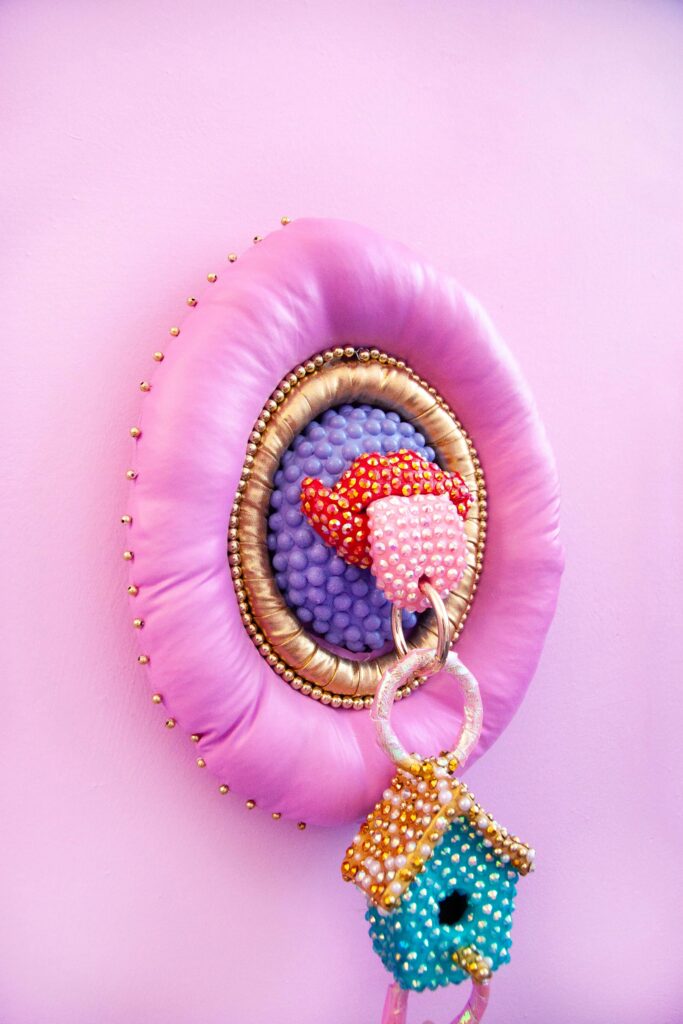

2. It was a delight to browse through such a colorful feed. What draws you to using such bright hues? What influences your color choices and the significance of pink in your work?
For me, pink is a color that works to show the power of the feminine. I am someone who genuinely embraces all things pink and glittery while also being able to feel like loving those things won’t limit what I can do or how people see me. I participated in a group exhibition at Ceysson y Bénétière in June 2022 called The Ecstasy of Saint Britney which heralded the excessive, pink, and decorative. Rather than seeing these things as a weakness, the exhibition pinned them as a power to be reckoned with. It isn’t dumb or frivolous to dress up or love the overly decorative, and being that shouldn’t make others think that there is nothing else beyond your exterior. After working with pink, I began to explore other highly saturated colors that stem from the plastic toy colors of girlhood: turquoise, yellow, purple, and lavender to name a few. With Barbie’s hues, the pieces seem playful and almost child-like, then present more serious social issues to the viewer upon closer inspection.


3. Ali, I love the depiction of Art in all your exhibitions. I am curious to know how welcoming the community is for such a distinct theme.
I haven’t received much backlash for my work. While the themes in my work are controversial, there is also so much more to the pieces regarding the love of materials and colors I use for people to enjoy. Depending on the viewer, these pieces could just appear to be whimsical, oversized pieces of jewelry, and nothing more. I think that’s the interesting part about them – they walk a line, and if someone doesn’t stay too long to look at them, they might miss a bigger conversation. This feels like a commentary on how these conversations are always around us even if we may not always notice them.



4. So you are a muralist, and a visual artist, each having its separate artistic practice. How do you maintain the balance and how do both of them inform each other?
The scale and complexity of my murals have influenced my studio work. I find myself making larger and more elaborate work in my studio, as well as thinking about how my studio work can interact with the architecture of an exhibition space once installed. I also In terms of how my studio work influences my public art, I would say it’s more conceptual. I am becoming more picky with projects, making sure they align more aesthetically or conceptually with the studio work I am creating. Of course, since public art is a commission, it may not always be a 100% match. But if I can choose opportunities that are 68% aligned with my studio practice as opposed to 15% aligned, I’ll naturally go for the higher percentage one.
The resulting pieces are flirtatious, attention-seeking, and deceptively superficial.

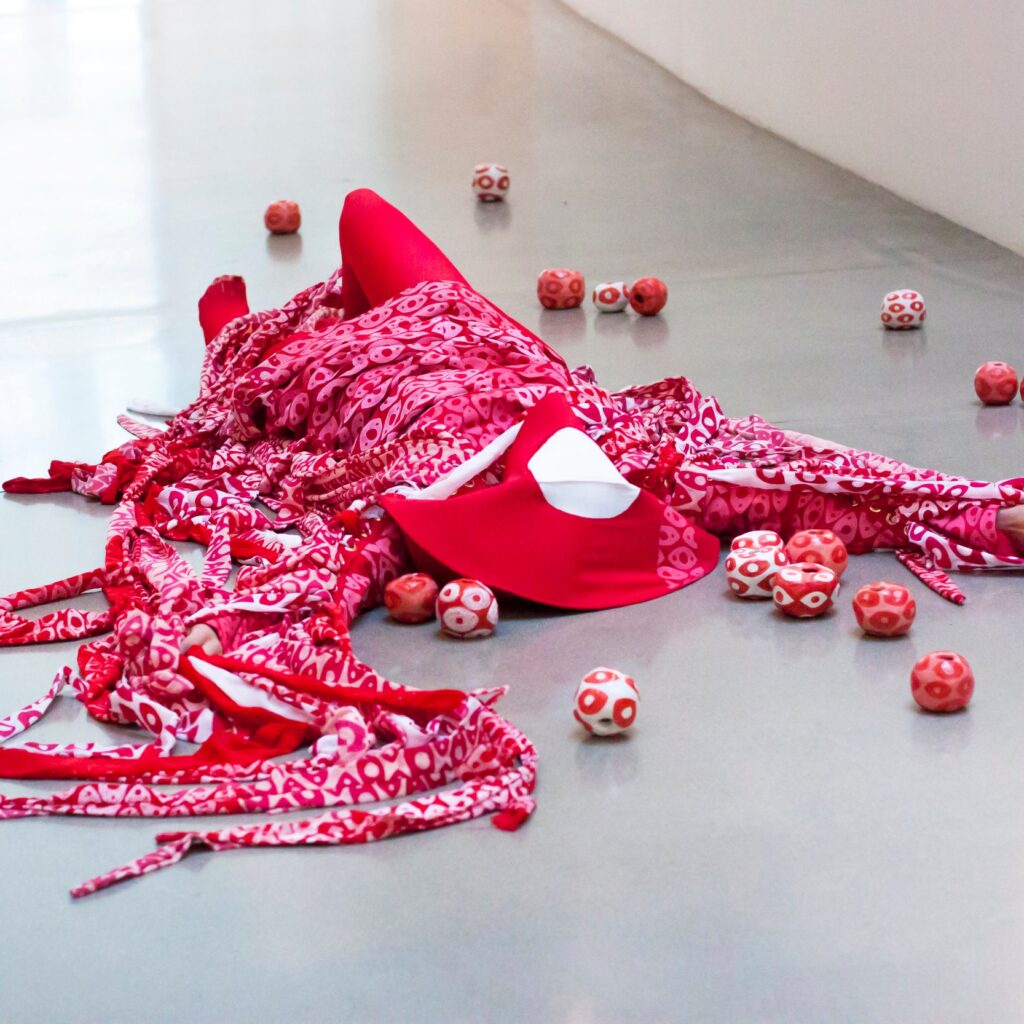
5. What advice would you give to artists who are trying to break into the world of public art?
One thing I am guilty of with public art is sometimes temporarily forgetting my individualism and making work that I assume a public art committee wants to see. The best advice I have to give is when applying to a public art opportunity, to maintain that individualism you have in your studio work. This is the work you’ve developed the most, so try to make your public art reflect that as well. The work that is the most unique and developed will catch a public art committee’s eye, not the work you “think” they want to see. They chose you for a reason, after all! When you finally get to the stage in your proposal where you are rendering the design, be as specific as possible: make a detailed mockup of the work in the space, including measurements and a detailed description, and multiple angles. This can be tedious work, and at times may feel overly repetitive, but it instills confidence in the committee by giving them a perfect idea of what the final product will look like.
Ali Hval started her creative journey by breaking barriers and fought the society by turning her fears into her strength. She has come a long way and recently did a solo show on the trending ‘Barbie’ theme. Explore our artists interviews for more inspirational stories.
Social Media Details of Ali Hval












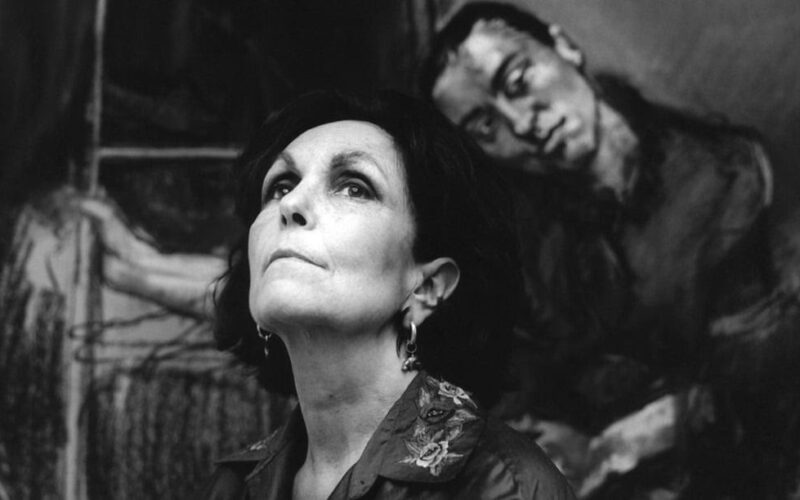

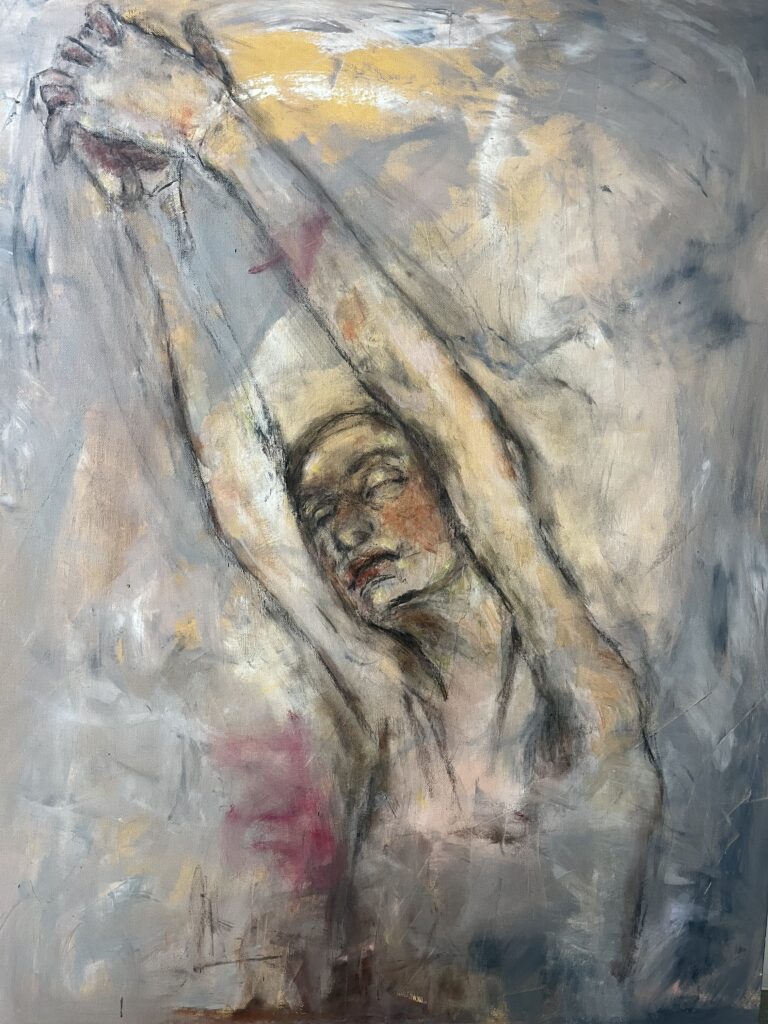

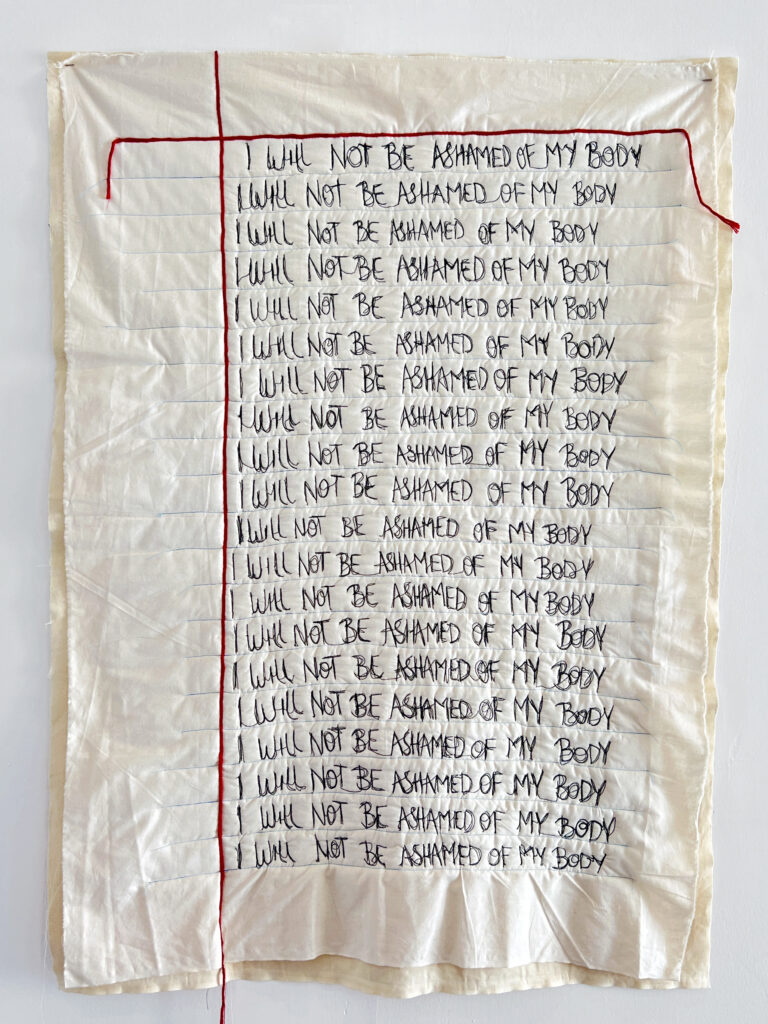
Comments 81